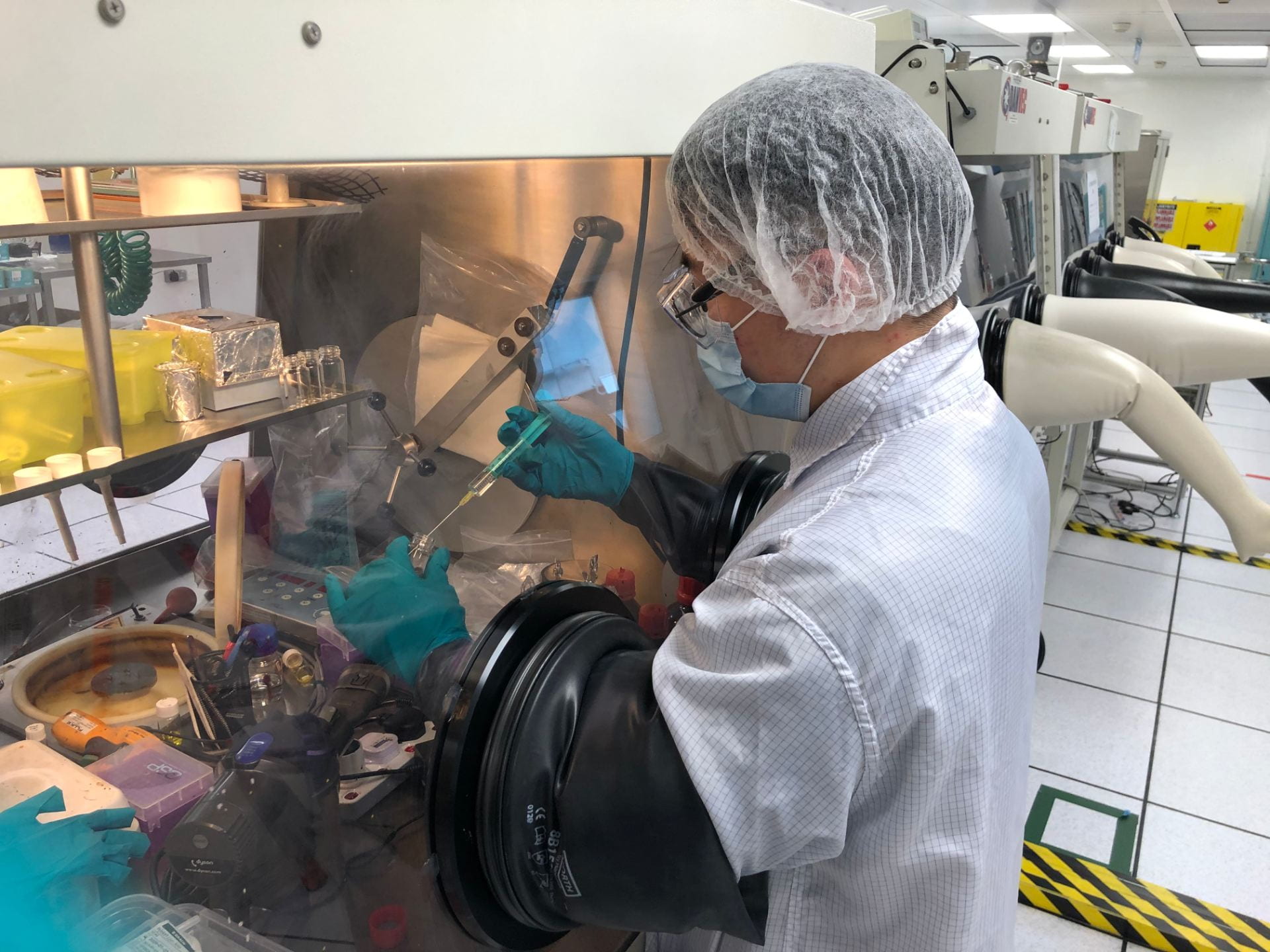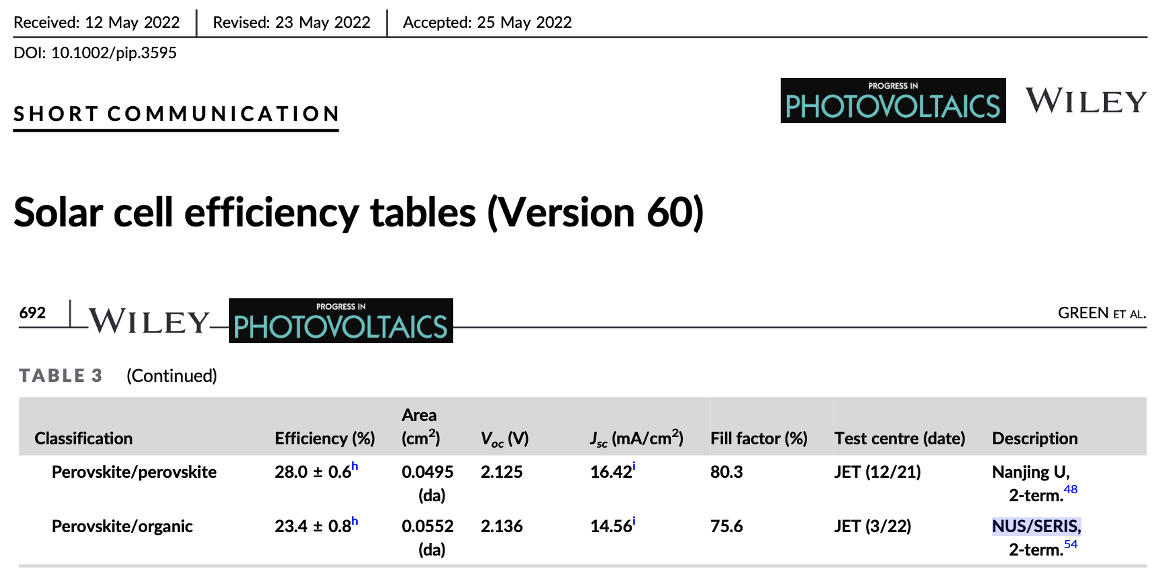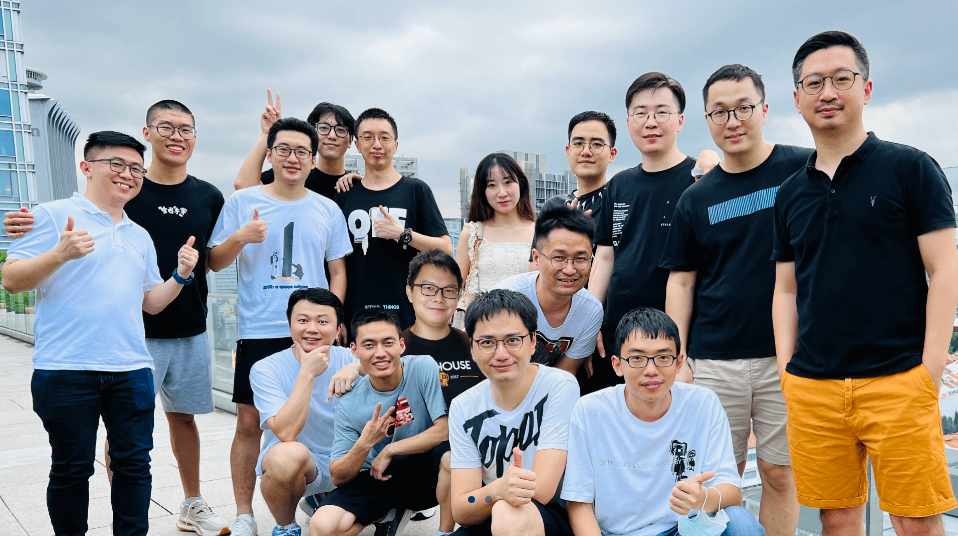Follow CDE on Socials

Dr Hou Yi
Assistant Professor
Department of Chemical and Biomolecular Engineering
Follow CDE on Socials
By leveraging his expertise in materials innovation, Assistant Professor Hou Yi is devising next-generation tandem solar cells towards meeting the energy demands of the future.
From vast manufacturing plants to elaborate transport systems, cities and their lively labyrinths of infrastructure have become near-synonymous with economic growth. But such rapid industrialisation has come at a stark price—urban cities are responsible for more than 60% of global energy consumption and 70% of greenhouse gas emissions.
This grave predicament arises from society’s continued reliance on burning fossil fuels for power generation, leading to an ever-enlarging carbon footprint. As further urbanisation is projected to double this energy demand by 2050, more sustainable solutions are urgently needed to keep the planet abuzz with life for centuries to come.
In sunny Singapore, scientists like Assistant Professor Hou Yi are spurring the transition to cleaner energy by tapping into photovoltaic technologies that convert sunlight into electricity—in other words, solar cells. As the city-state imports nearly all of its energy supply, maximising power generation from such renewable sources will be crucial to securing Singapore’s energy future.
“Silicon-based solar cells are reaching their theoretical limit of efficiency,” noted Hou who is a Presidential Young Assistant Professor in the Department of Chemical and Biomolecular Engineering at the NUS College of Design and Engineering. To overcome this limit, his research group aims to design more cost-effective devices for solar energy harvesting, with a focus on perovskite-based tandem photovoltaics.

Perovskite enters the spotlight
As a synthetic material, perovskite is not only cheaper to produce than silicon cells, but it also has unique absorption properties in capturing a different wavelength of light. Accordingly, different photovoltaic material compositions provide different absorption spectra, effectively influencing the amount of light energy that the device can convert to electricity.
“By combining silicon with perovskite materials in tandem solar cells, we are able to harness more energy as we can vary the perovskite composition to minimise thermalisation loss and absorb more light,” Hou said. “With these, the device can then convert more light energy into electricity, leading to a higher power conversion efficiency (PCE).”
According to Hou, using perovskite is also advantageous since solution-based coating methods and advanced deposition techniques can deposit the material at specific bandgaps across a variety of substances. Such tunability in device design ultimately enables the further development low-cost yet high-quality solar cells.
“Thanks to these properties, perovskite-based tandem devices can be readily deployed to supply power to the community in near future,” Hou shared. “But before these solar cells can light up a whole town, further engineering innovations are needed to optimise such complex materials—ranging from developing high-throughput fabrication techniques, to improving the devices’ stability.”
From lab to fab(rication)
Whether the perovskite absorbers or the interconnecting layers and electrodes, manipulating materials no doubt stands as the foundation of Hou’s research endeavours. In turn, core innovations in this area can translate into increased flexibility and precision in tandem configurations, leading to better overall photovoltaic performance.
To accelerate the journey to industrial impact,Hou and his team are also exploring new ways to process and assemble materials to deliver specific functional properties. He hopes to innovate more reliable yet cost-efficient approaches to produce tandem solar cells on a large scale.
As daunting a challenge as it may seem, Hou remains unfazed by the mission that lies ahead. “Complex technical issues of today call for integrating knowledge and competencies from diverse backgrounds,” he said, emphasising that synergistic collaborations across fields are key to forging creative innovations and tackling such multi-faceted problems.
“Within our multi-disciplinary team, I strive to promote a harmonious and risk-tolerant culture so that our group members can learn from each other and explore new ideas without the fear of failure,” he added.
Hou’s group has certainly reaped the rewards of this intrepid approach to research. Recently, they developed a thin film-based perovskite/organic tandem solar cell that set a new world-record PCE of 23.4%, which has been included in the latest “Solar cell efficiency tables (version 60)” in Progress in Photovoltaics. This is the first time a Singapore-based research institute has marked a certified solar cell world record.

Leveraging their combined expertise in materials chemistry and engineering, the team coated organics on the surface of nickel oxide nanoparticles to lower the reactivity, effectively suppressing interfacial defects and dramatically boosting the voltage and conductivity through the perovskite layer. They further optimised the device’s performance by inserting a thin indium zinc oxide layer through a deposition technique called sputtering—bypassing the need for a middle metal layer in the interconnecting structure while providing excellent near-infrared transmittance for enhanced energy conversion.
“Next-generation tandem solar cells can help address the sharp rise in global energy demands as many countries are digitalising their domestic economies,” Hou said. “Through materials innovation, we can tackle the climate crisis via practical, deployable solutions.”

People
Hou Yi ▏ Assistant Professor, Department of Chemical and Biomolecular Engineering ▏ LinkedIn Profile
Related Departments/ Centres
If you are interested to connect with us, email us at cdenews@nus.edu.sg








